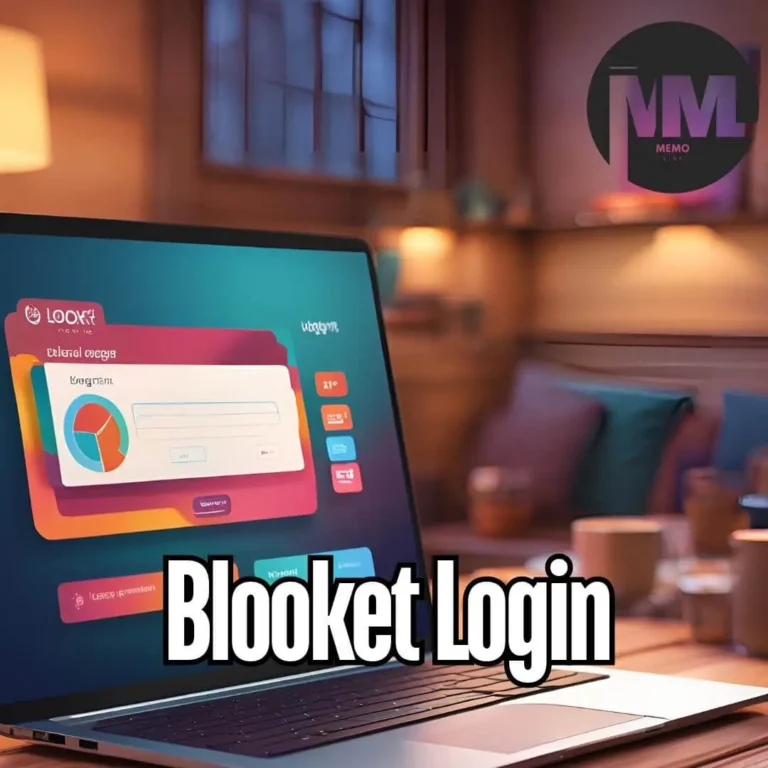
Gimkit Host
What Is Gimkit Host? In today’s digital age, engaging students in learning has become a challenge. Traditional methods often fail to keep students interested, particularly in a world dominated by technology and interactive media. However, game-based learning (GBL) has emerged as a powerful solution to this problem. Gimkit, a popular live quiz platform, allows educators to host Gimkit games that promote interactive and competitive learning experiences.
In this article, we’ll explore everything you need to know about being a Gimkit host and creating engaging educational experiences for students. From setting up quizzes to using game mechanics that motivate learners, we’ll cover best practices and offer practical tips for creating an impactful learning environment.
Introduction to Host Gimkit
Gimkit is a live, web-based game platform where educators can host Gimkit quizzes in real-time, making learning both fun and competitive. With Gimkit, students can answer questions in a dynamic environment while earning virtual currency for correct answers. The platform turns routine quizzes into exciting games by allowing students to buy power-ups and bonuses using their earned points.
As a Gimkit host, you have the power to transform your classroom into an active, student-driven learning space. Let’s dive into how you can maximize the potential of Gimkit by using it to engage students and boost educational outcomes.
How to Host Gimkit Game: Step-by-Step Guide
Whether you’re new to the platform or looking to enhance your skills, here’s how to successfully host a Gimkit game.
1. Creating Your Gimkit Account
To get started, visit the Gimkit website and sign up for a Gimkit host free account. You’ll be guided through the registration process, which is simple and user-friendly. Once registered, you’ll have access to your Gimkit dashboard as the host.
2. Setting Up a Quiz (Kit)
After logging into the Gimkit host dashboard, you can begin by creating a quiz, known as a “kit.” You have the option to:
- Create your own questions from scratch.
- Browse through Gimkit‘s pre-made templates.
- Import questions from other sources to save time.
Tailor the questions to suit the subject and level of your students. Make sure to add questions that challenge but don’t overwhelm your students.
3. Hosting the Game
Once your quiz is ready, it’s time to host Gimkit game. Click the “Play” button in your Gimkit host dashboard and invite students to join by sharing the game code. Students can easily join the game by entering the code on their own devices. This seamless connection between teacher and student ensures that the quiz can start promptly.
4. Managing In-Game Mechanics
As the Gimkit host, you can monitor student progress in real-time. The game shows a leaderboard with student rankings, allowing you to see which students are performing well and which might need extra help.
You also have the ability to tweak settings mid-game, such as adjusting the difficulty of the questions or enabling power-ups, to keep the game dynamic.
5. Providing Feedback and Reviewing Results
One of the greatest advantages of Gimkit is the instant feedback students receive. Correct answers earn students points and virtual currency, while incorrect answers allow them to learn from their mistakes without penalties. After the game, you can access detailed reports through your Gimkit dashboard host, which helps in assessing each student’s understanding of the material.
You may also like: Gimkit Login
Benefits of Being a Gimkit Host
Becoming a Gimkit host offers several benefits, from improved student motivation to a more interactive learning environment. Here are a few reasons why you should consider incorporating Gimkit into your classroom routine:
1. Boosting Student Engagement
As a Gimkit host, you tap into the natural competitiveness of students. The game-based format encourages participation by offering rewards like points and upgrades. This ensures that students stay motivated throughout the lesson.
2. Enhancing Retention and Understanding
The immediate feedback students receive during a Gimkit host game reinforces learning. Students can see which answers they got wrong and quickly adjust, promoting better retention of information and a deeper understanding of the material.
3. Encouraging Team Collaboration
Gimkit allows the option to divide students into teams, which promotes collaboration. When students work together to answer questions, it fosters peer learning and helps quieter students engage more confidently.
4. Encouraging a Growth Mindset
Unlike traditional tests that can be discouraging, Gimkit/host emphasizes continuous improvement. By encouraging students to keep trying until they get the right answer, it promotes a growth mindset, where learning is seen as a process of trial and error.
Best Practices for Hosting a Gimkit Game
Being a successful Gimkit/host requires a mix of preparation and adaptability. Here are some best practices to ensure you get the most out of your Gimkit host game:
1. Create a Balance Between Fun and Learning
Although Gimkit makes learning enjoyable, ensure that the primary focus remains on education. Design quizzes that not only engage students but also meet your lesson objectives. Mix easier questions with more challenging ones to keep students on their toes.
2. Incorporate Team-Based Modes
To foster inclusivity, use team-based modes where students can collaborate. Team modes are great for encouraging participation from all students, especially those who may feel less confident about competing individually.
3. Use Power-Ups Sparingly
While power-ups are a fun addition, using them too frequently can distract from the learning aspect of the game. Encourage students to use power-ups strategically and to focus on answering questions correctly.
4. Monitor Student Behavior
Since students can become overly competitive in a Gimkit host game, set clear guidelines for behavior. Remind students that the main goal is learning and not just winning the game. This ensures that the game remains a productive learning experience.
5. Integrate Gimkit with Other Teaching Tools
Gimkit works well alongside other teaching strategies and tools. You can pair it with group projects, homework assignments, or even review sessions before exams. This combination ensures a well-rounded learning experience.
Challenges and How to Overcome as Gimkit/host
Even though hosting a Gimkit game is straightforward, there are certain challenges that you may encounter as a Gimkit/host. Here are some common issues and how to address them:
1. Technical Issues
Before you host a Gimkit game, ensure that your internet connection and devices are functioning correctly. Test the game in advance, especially if you’re conducting a session in a remote or hybrid learning environment. Keep a backup activity in case technical issues arise.
2. Managing Student Participation
Some students might dominate the game due to their quick thinking, leaving others behind. To ensure a level playing field, use the team mode or randomize groupings so that all students can contribute equally.
Exploring Different Game Modes as a Gimkit Host
As a Gimkit host, you have access to various game modes that can be tailored to your classroom’s needs. These modes, such as Classic, Team, and Trust No One, offer unique ways to engage students with different learning styles. Experimenting with different modes ensures variety and keeps students motivated.
Classic Mode: Individual Competition
Classic Mode is ideal for individual competition, where students answer questions to earn points and climb the leaderboard. It works well for fostering a competitive spirit and encouraging self-paced learning.
Team Mode: Promoting Collaboration
Team Mode splits the class into groups, allowing students to collaborate on answering questions. This mode is excellent for promoting teamwork and peer support, creating a balanced learning environment for students of different abilities.
Trust No One: Gamified Learning with a Twist
Trust No One is inspired by social deduction games like Among Us. In this mode, students still answer questions, but a few are given the role of “impostors” whose goal is to mislead the team. This mode introduces strategic thinking and adds an extra layer of excitement to learning.
Utilizing Power-Ups and Boosts Effectively as a Gimkit Host
Power-ups and boosts add an extra dimension of strategy to Gimkit games. As a Gimkit host, understanding how to manage these elements will ensure students remain focused on learning while enjoying the game’s fun features.
Choosing Power-Ups for Enhanced Learning
Power-ups allow students to double their points, steal from others, or even freeze their competition. As the host, you should encourage students to use power-ups strategically, making sure that these boosts complement the learning goals rather than distracting from them.
Balancing the Use of Boosts
Some students may rely heavily on power-ups to dominate the game, which can discourage others. As the Gimkit host, you can manage this by adjusting the frequency of power-ups or creating challenges where boosts are limited. This maintains a fair and competitive environment for all learners.

Customizing Questions and Themes in Gimkit
Personalizing your Gimkit host experience through customized quizzes can make a big impact on student engagement. You can create questions tailored to your lesson plans and even add themed games to tie into specific subjects or events.
Building Subject-Specific Kits
As a Gimkit host, you have the flexibility to create quizzes specific to any subject, whether it’s math, history, or language arts. Craft questions that target your students’ current learning objectives, ensuring that the quiz aligns with the curriculum.
Adding Fun Themes to Enhance Learning
Themed games can be a great way to align with holidays, special events, or units of study. For instance, you can create a history-themed kit for national holidays or design a math challenge that corresponds with a special occasion, adding an extra layer of fun to the game.
Advanced Features for a Pro-Level Gimkit Host
If you’re looking to take your Gimkit host skills to the next level, explore advanced features such as automated assessments, class reports, and integrated multimedia. These features can enhance both the teaching and learning experience.
Automated Assessments for Instant Feedback
Advanced Gimkit tools allow you to automate assessments, providing instant feedback to both students and teachers. By incorporating this feature, you can save time on grading while giving students real-time insights into their performance.
Generating Detailed Class Reports
As a Gimkit host, you have access to detailed analytics on each student’s performance. Use class reports to identify learning gaps and adjust future lessons accordingly. These insights are invaluable for creating targeted interventions and personalized learning plans.
Incorporating Multimedia into Your Games
For an even more interactive experience, use Gimkit’s multimedia features. You can embed images, videos, or audio clips into your quizzes to create a richer learning environment. This is especially helpful for subjects like art, music, and foreign languages.
Managing Time as a Gimkit Host
Time management is key when hosting a Gimkit game. As the Gimkit host, you can control the pace of the game, ensuring that all students have adequate time to participate and absorb the material.
Setting Time Limits for Each Question
You can set time limits for each question, ensuring the game maintains a steady flow while allowing students to think critically. Adjust these limits based on the difficulty of the questions and the pace of your classroom.
Using Timed Sessions to Increase Focus
Consider hosting timed sessions where students must complete a set number of questions within a fixed period. This can help in building focus and quick recall, especially useful for exam preparation.
Troubleshooting Common Issues as a Gimkit Host
Even seasoned Gimkit hosts may encounter technical or logistical issues during gameplay. Knowing how to troubleshoot common problems will help ensure a smooth gaming experience.
· Addressing Connectivity Issues
If students are experiencing connectivity problems during a live game, have them reload the page or try a different browser. As a host, it’s also a good idea to ensure the network is stable before starting the session.
· Dealing with Unbalanced Competition
If certain students are dominating the game too much, you can level the playing field by tweaking game settings. Consider introducing team mode or reducing the power-ups available to high-ranking players to maintain balance and fairness.
· Handling Student Disengagement
If students begin to lose interest, switch up the game mode or incorporate new types of questions. Alternatively, you can use shorter, more frequent games to keep the momentum going without overwhelming students.
Hosting Gimkit Remotely: Best Practices
In the era of remote and hybrid learning, Gimkit is an ideal tool for maintaining student engagement from afar. Hosting a Gimkit game remotely involves a few additional steps to ensure that students stay connected and involved.
· Ensuring Smooth Remote Participation
When hosting remotely, ensure that all students have the necessary tools, such as a stable internet connection and compatible devices. Send clear instructions before the game starts to avoid technical difficulties.
· Keeping Remote Students Engaged
Encourage communication during remote sessions by using Gimkit‘s chat or discussion features. This helps to recreate the interactive environment of a physical classroom. You can also rotate question types or include multimedia to keep remote learners engaged.
· Game Fatigue
Using Gimkit too frequently can cause students to lose interest. To prevent game fatigue, incorporate other activities like discussions, projects, or traditional quizzes to keep the learning experience varied.
Frequently Asked Questions (FAQs) – Gimkit Create Host
How to host a Gimkit game?
To host a Gimkit game, simply create a quiz in your Gimkit dashboard, share the game code with your students, and let them join via their devices.
Can I use Gimkit for free?
Yes, Gimkit offers a Gimkit host free version. However, certain advanced features require a paid subscription.
How do I keep students engaged during a Gimkit session?
Use power-ups and rewards to keep the game exciting. You can also implement team modes to encourage collaboration and friendly competition.
Can students play Gimkit remotely?
Yes, students can join a Gimkit host live game remotely by entering the provided code on their devices. This makes Gimkit ideal for distance learning.
Can I track student progress in Gimkit Join Host?
Absolutely! Gimkit provides detailed reports on student performance, which you can access via the Gimkit host dashboard.
What subjects can I use Gimkit for?
Gimkit is versatile and can be used for virtually any subject, including math, science, history, and language arts.
Is Gimkit/host suitable for all age groups?
Yes, Gimkit/host can be adapted to fit different age groups and educational levels.
How do I address technical issues during a Gimkit session?
Test your connection and devices in advance. If issues arise, provide students with an alternative activity until the problem is resolved.
How can I prevent game fatigue?
Avoid overusing Gimkit. Instead, integrate it as one of several teaching tools to keep students excited and engaged.
Can students host their own Gimkit games?
Yes, students can also host a Gimkit game, which is a great way to encourage peer learning and give them ownership of the learning process.
Conclusion – Gimkit Join Host
Being a Gimkit host can revolutionize the way you teach and engage your students. By incorporating game-based learning through Gimkit, you create an interactive environment where students are motivated to participate and eager to learn. Whether you’re looking to enhance classroom activities, encourage remote learning, or boost student performance, Gimkit offers endless opportunities to make learning both educational and enjoyable.
By following the steps outlined in this guide and implementing best practices, you can become a successful Gimkit host and unlock the full potential of your students.





